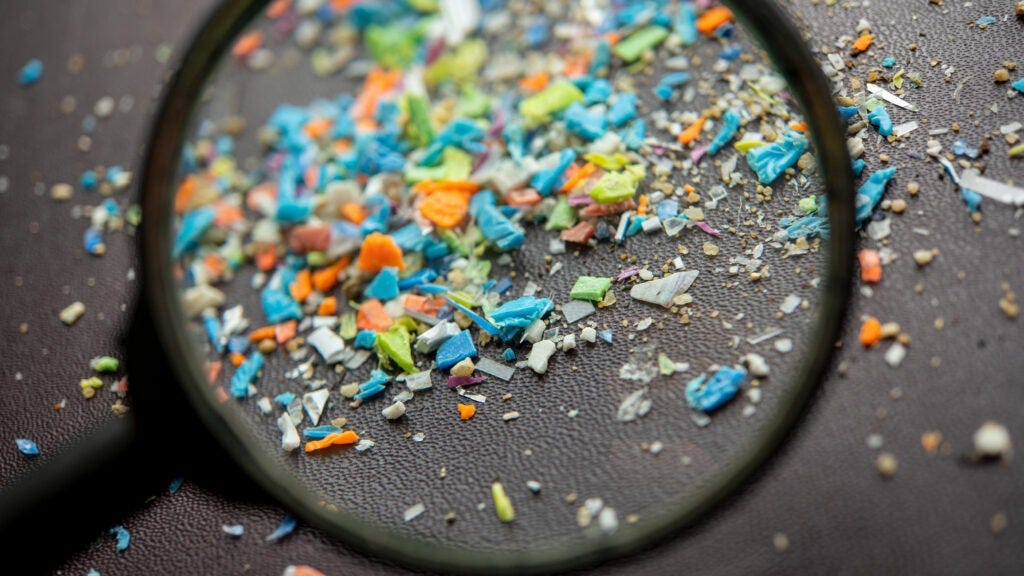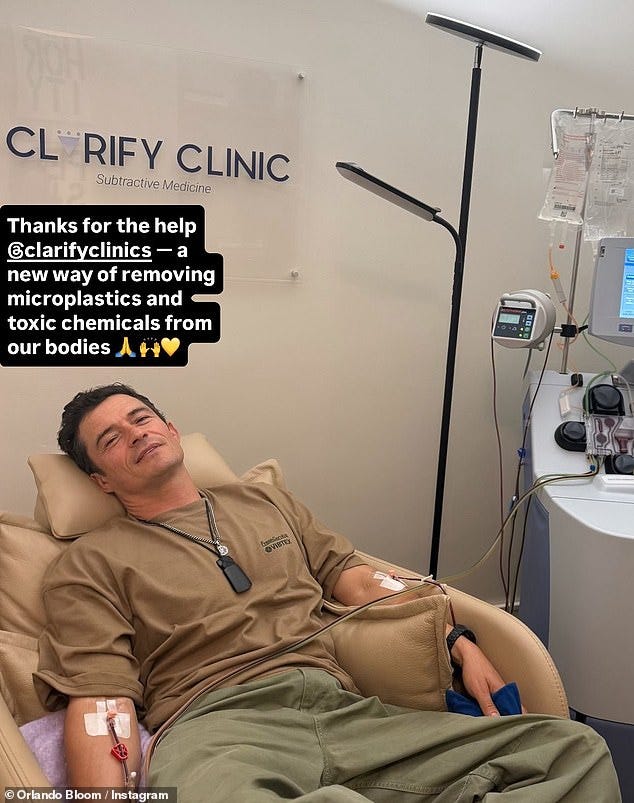In Bloom
Can You Really Filter Microplastics from Your Blood with a Dialysis Machine?
At the beginning of last month, it was widely reported that the Hollywood actor Orlando Bloom underwent a £10,000 treatment to remove microplastics from his blood.
Bloom posted a picture of himself at the Clarify Clinic off London’s Harley Street, hooked up intravenously to a filtration machine of some kind—perhaps a hemodialysis machine, which would typically be used by sufferers of kidney failure.
Here’s some of what The Daily Mail had to say about Bloom’s treatment.
He helped defeat Sauron in Lord of the Rings and has sailed the seven seas in Pirates of the Caribbean.
And Orlando Bloom's latest adventure may sound like the plot of an equally fantastical film - except it's real.
The star looked very relaxed as he was hooked up to a machine that is claimed to remove microplastics from the blood.
The London clinic offering the £10,000, two-hour treatment was praised by the actor, 48, for ridding his body of 'toxic chemicals'.
The Mail goes on to explain, in general terms, how the treatment is supposed to work.
During the treatment, blood is extracted from the arm and split into red blood cells and plasma. This plasma, according to David Cohen, the inventor of the procedure, is then cleansed of its 'forever chemicals, the microplastics, the inflammation and the poisons and toxins' with a machine before being mixed with the red blood cells again and put back into the body.
Clarify Clinics is said to be the first in the world to offer the service, called Clari. It is claimed to remove between 90 and 99 per cent of microplastics from the blood.
Clinic bosses say the procedure—which is not covered by the NHS—reduces inflammation in the body, which has been linked to cancer and neurological disorders.
The claims made by Bloom and the Clarify Clinic have been greeted with a significant amount of scepticism, but there’s absolutely no reason to believe blood filtration wouldn’t work to remove microplastics from the blood. If you remove blood from the body, put it through a filter that’s finely graded enough to catch microplastics, then return it to the body, the blood would contain fewer microplastics.
The main issue really, from a technical perspective, would be the filter itself. Microplastics come in a wide variety of sizes, from particles that are visible to the eye (5mm), to particles that need powerful imaging technologies to be seen. We’re just starting to learn about a new, even trickier, class of microplastics called nanoplastics, which are even smaller (smaller than one micrometre, or one thousandth of a millimetre) and potentially cause much more damage within the body because they can get into even tighter spaces than microplastics. Nanoplastics would require tremendously fine filters to catch.
There are some other practical problems that deserve consideration too.
Clarify Clinics haven’t provided any details about the machines used, but as I mentioned at the beginning, it’s likely to be something like a hemodialysis unit used by sufferers of kidney failure. This class of machine is called an apheresis machine. They’re also used in a number of other treatments as well, such as removing cholesterol, toxins or antibodies that trigger autoimmune diseases. They can also be used to collect cells from the blood, such as stem cells or platelets, for transplants.
One problem with these machines is that they actually introduce microplastics directly into the bloodstream of users, because they contain plastic parts and use plastic tubing to circulate the blood. In the picture posted by Orlando Bloom, you can clearly see plastic tubing leading from the actor’s arm to the machine and back, and you can also see that the machine itself is made of plastic.
Just how big a problem is this? A study this year in the journal BMC Nephrology looked at 30 samples of dialysis solution—a solution designed to mimic the composition of blood plasma—using advanced imaging techniques. Microplastics were discovered in every single sample. Polyethylene, polyvinyl chloride and ethylene vinyl acetate were the main types. These are all types of plastic used in dialysis machines.





